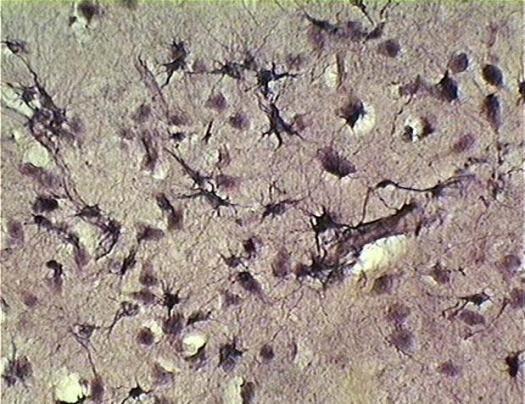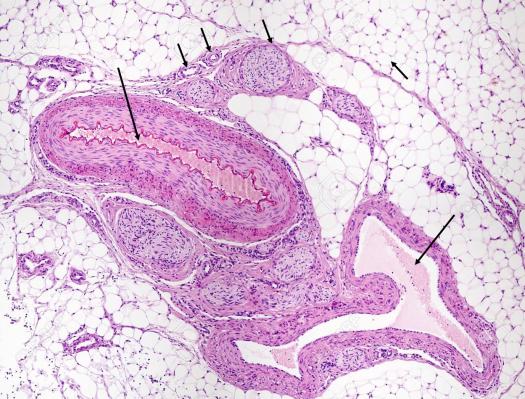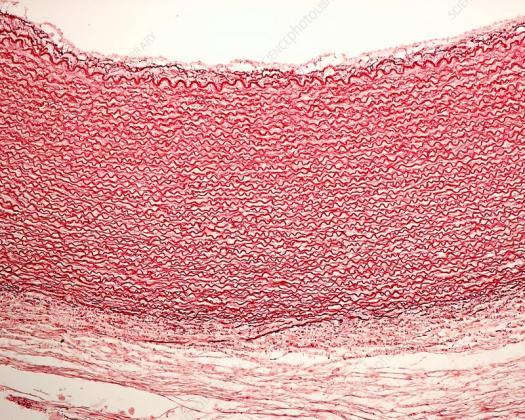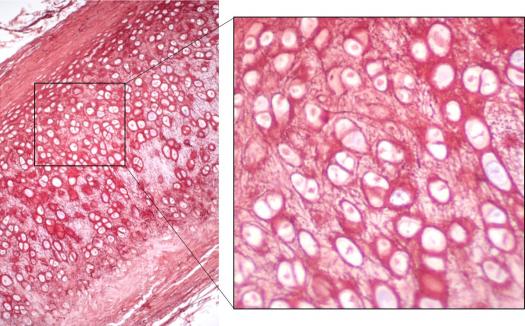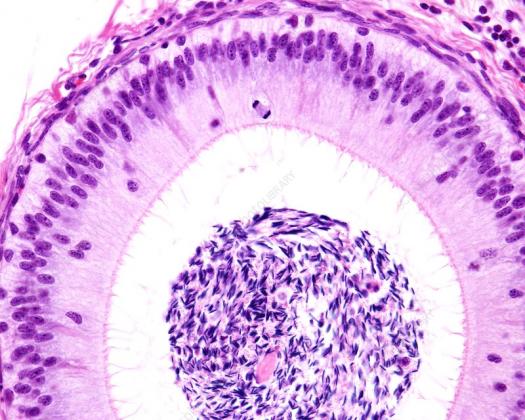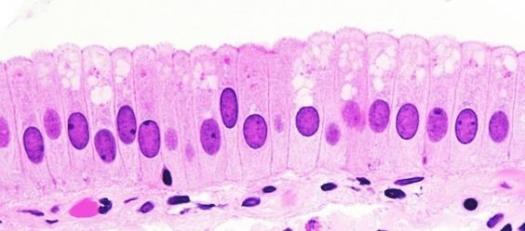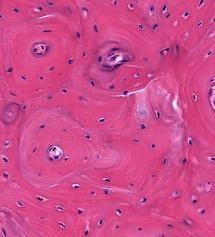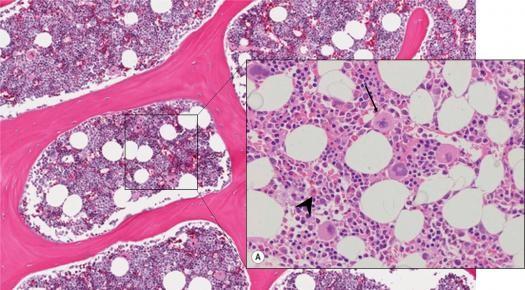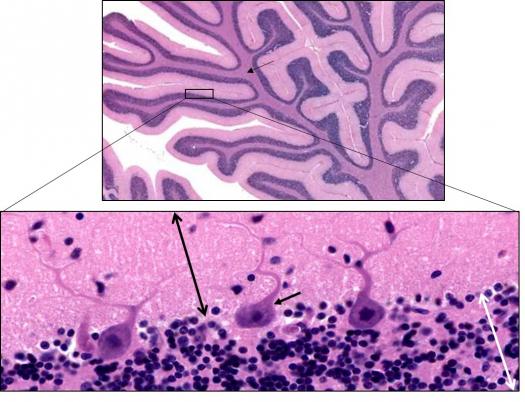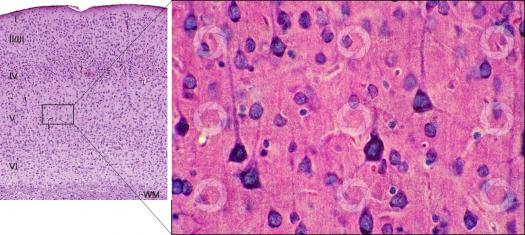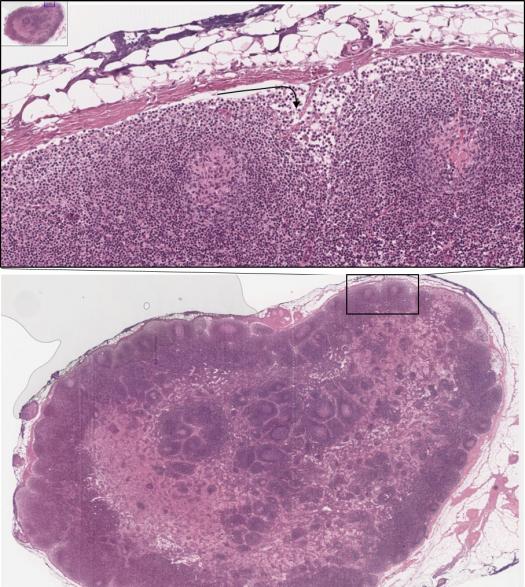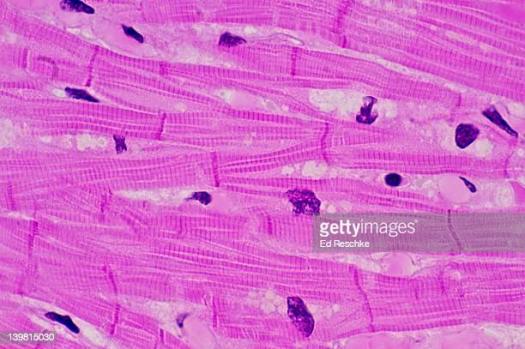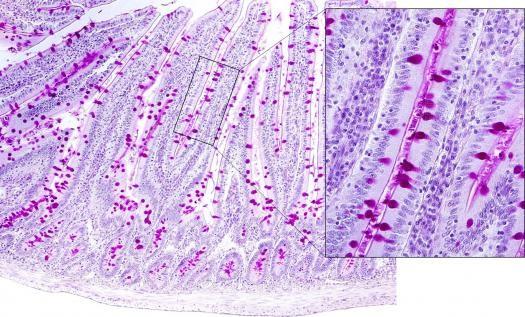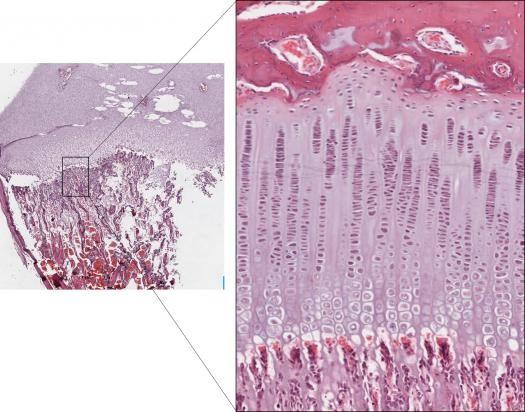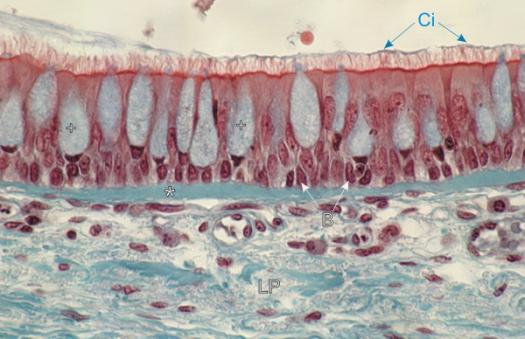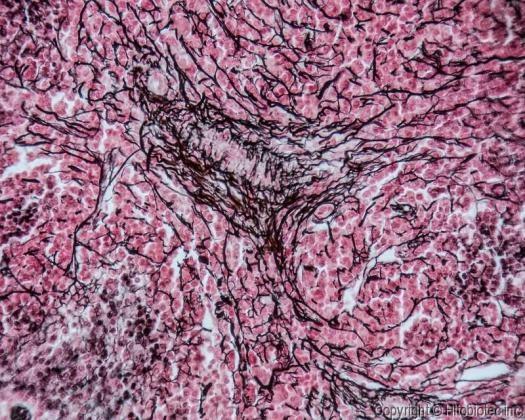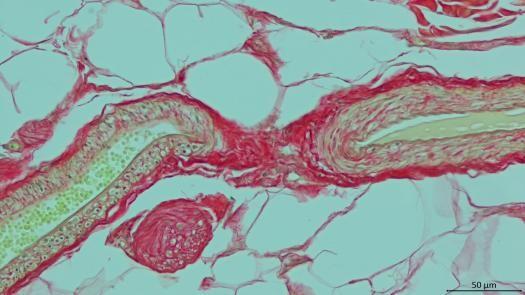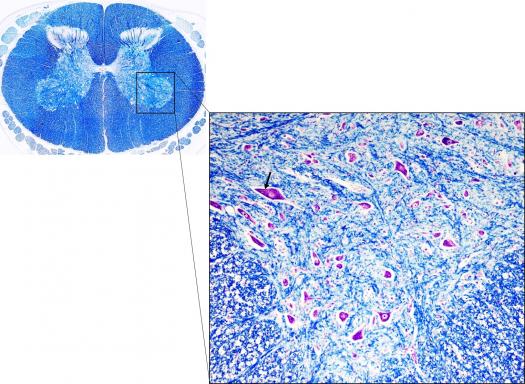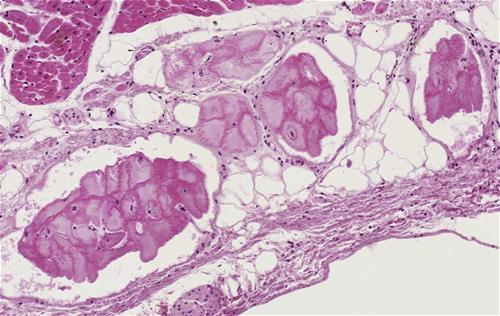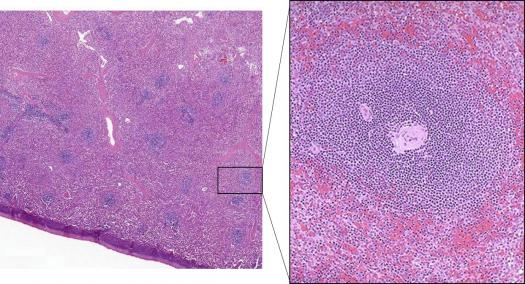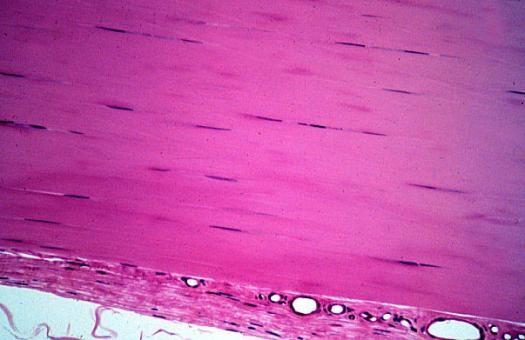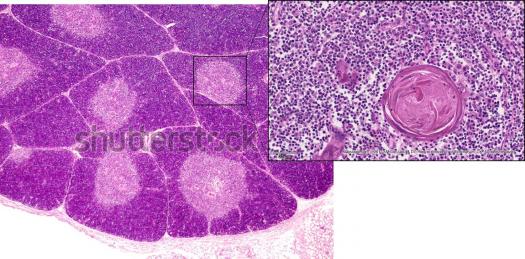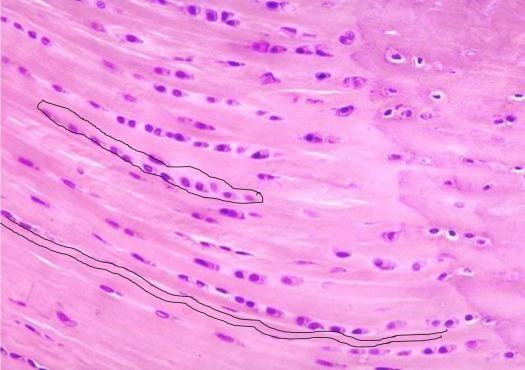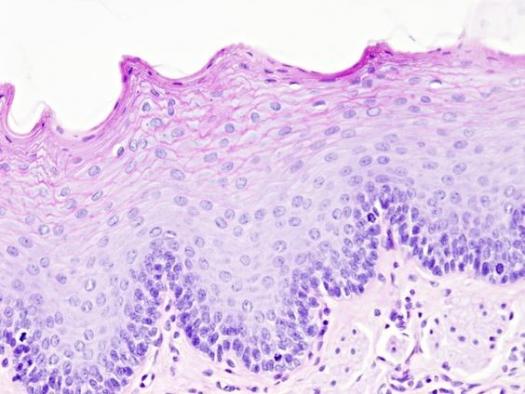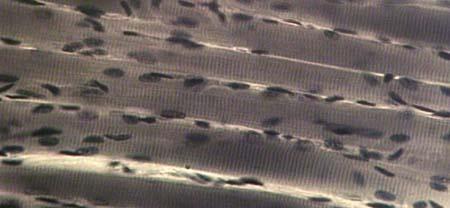Histology Test - Can You Get All Answers Right?
(259).jpg)
Histology, also known as microscopic anatomy or microanatomy, is the branch of biology that studies the microscopic anatomy of biological tissues. Histology is the microscopic counterpart to gross anatomy, which looks at larger structures visible without a microscope.
Can you get all answers right in this Histology Test? Take the quiz to see how much you know and learn more.
- 1.
Which type of cells and staining method are shown in this microphotography?
- A.
Astrocytes (Cajal method)
- B.
Fibroblasts (Masson`s Trichrome)
- C.
Chondrocytes (native slide)
Correct Answer
A. Astrocytes (Cajal method)Explanation
The microphotography shows astrocytes stained using the Cajal method. The Cajal method is a staining technique specifically used to visualize astrocytes, which are a type of glial cell found in the central nervous system. This staining method allows for the identification and visualization of astrocytes, which are important for supporting and maintaining the functions of neurons in the brain and spinal cord.Rate this question:
-
- 2.
Which type of staining method is shown in this microphotography?
- A.
Mallory-Azan (the wall of bronchus)
- B.
Masson`s Trichrome (the wall of bronchus)
- C.
Cajal method (the wall of bronchus)
Correct Answer
A. Mallory-Azan (the wall of bronchus)Explanation
The correct answer is Mallory-Azan (the wall of bronchus). This staining method is used to differentiate different types of tissues and cells based on their color. Mallory-Azan staining specifically stains collagen fibers blue and muscle fibers red, allowing for the visualization and differentiation of these structures in the wall of the bronchus.Rate this question:
-
- 3.
Which structures and staining method are shown in this microphotography?
- A.
Vessels, nerves, white adipose tissue (HE)
- B.
Compact bone (Orcein)
- C.
Vessels, nerves, brown adipose tissue (Masson`s Trichrome)
Correct Answer
A. Vessels, nerves, white adipose tissue (HE)Explanation
The microphotography shows vessels, nerves, and white adipose tissue. These structures are stained using the HE (hematoxylin and eosin) staining method. This staining method is commonly used in histology to differentiate various tissue types and highlight specific cellular components. Hematoxylin stains nuclei and other acidic structures blue, while eosin stains cytoplasm and other basic structures pink. In this case, the white adipose tissue appears pink, while the vessels and nerves appear blue.Rate this question:
-
- 4.
Which structure and staining method are shown in this microphotography?
- A.
The wall of elastic artery (Orcein)
- B.
The wall of capillary (Orcein)
- C.
The wall of elastic artery (HE)
Correct Answer
A. The wall of elastic artery (Orcein)Explanation
The correct answer is "The wall of elastic artery (Orcein)". This is because the staining method used in the microphotography is Orcein, which is known for specifically staining elastic fibers. Additionally, the structure shown in the image matches the characteristics of an elastic artery, which has a thick wall containing numerous elastic fibers.Rate this question:
-
- 5.
Which structure and staining method are shown in this microphotography?
- A.
Elastic cartilage (Orcein)
- B.
Hyaline cartilage (HE)
- C.
Tendo (Orcein)
Correct Answer
A. Elastic cartilage (Orcein)Explanation
The microphotography shows elastic cartilage stained with the Orcein staining method. Elastic cartilage is a type of cartilage that contains elastic fibers, which give it its characteristic flexibility. Orcein is a staining method commonly used to highlight elastic fibers, as it binds to these fibers and produces a dark brown or black color. Therefore, the combination of elastic cartilage and Orcein staining is depicted in the given microphotography.Rate this question:
-
- 6.
Which type of epithelium and staining method are shown in this microphotography?
- A.
Pseudostratified columnar ep. with stereocilia (HE)
- B.
Simple cuboidal ep. with cilia (HE)
- C.
Stratified squamous ep. with microvilli (HE)
Correct Answer
A. Pseudostratified columnar ep. with stereocilia (HE)Explanation
The correct answer is Pseudostratified columnar epithelium with stereocilia (HE). This is because the microphotography shows a layer of epithelial cells that appear to be arranged in multiple layers, giving the appearance of being stratified. However, upon closer examination, it can be seen that all the cells are anchored to the basement membrane, indicating that they are actually a single layer of cells. Additionally, the presence of stereocilia, which are long, non-motile microvilli, further confirms that the epithelium is pseudostratified columnar. The staining method used in the microphotography is Hematoxylin and Eosin (HE), which is a commonly used staining method in histology to visualize cellular structures.Rate this question:
-
- 7.
Which structure and staining method are shown in this microphotography?
- A.
Hyaline cartilage (HE)
- B.
Elastic cartilage (HE)
- C.
Brain cortex (HE)
Correct Answer
A. Hyaline cartilage (HE)Explanation
The correct answer is Hyaline cartilage (HE). The image is showing a microphotography of a tissue stained with Hematoxylin and Eosin (HE). HE staining is commonly used in histology to visualize different types of tissues. In this case, the tissue appears to be hyaline cartilage, which is a type of connective tissue found in areas such as the nose, trachea, and joints. HE staining allows for the visualization of the tissue's cellular structure and extracellular matrix.Rate this question:
-
- 8.
Which type of epithelium and staining method are shown in this microphotography?
- A.
Simple culumnar ep. (HE)
- B.
Simple cuboidal ep. (HE)
- C.
Simple squamous ep. (HE)
Correct Answer
A. Simple culumnar ep. (HE)Explanation
The microphotography shows a type of epithelium that is simple columnar. This can be determined by examining the shape of the cells, which are tall and rectangular in appearance. The staining method used in the microphotography is Hematoxylin and Eosin (HE). This staining technique is commonly used in histology to highlight cellular structures and differentiate between different types of tissues.Rate this question:
-
- 9.
Which structure and staining method are shown in this microphotography?
- A.
Compact bone (HE)
- B.
Sponge bone (HE)
- C.
Dense irregular connective tissue (HE)
Correct Answer
A. Compact bone (HE)Explanation
The correct answer is Compact bone (HE). This is indicated by the presence of a dense and organized structure with numerous osteocytes arranged in concentric circles around central canals, which is characteristic of compact bone. The staining method used is Hematoxylin and Eosin (HE), which is a common staining technique used to highlight cellular structures and tissue components.Rate this question:
-
- 10.
Which organ and staining method are shown in this microphotography?
- A.
Bone marrow (HE)
- B.
Thymus (HE)
- C.
Spleen (HE)
Correct Answer
A. Bone marrow (HE)Explanation
The correct answer is Bone marrow (HE). In the microphotography, the tissue sample shows the characteristic features of bone marrow, such as hematopoietic cells, adipocytes, and stromal cells. The staining method used is Hematoxylin and Eosin (HE), which is a commonly used staining technique in histology. HE staining allows for the visualization of cellular structures and differentiation of various tissue components based on their staining properties. Therefore, the combination of bone marrow and HE staining is consistent with the features observed in the microphotography.Rate this question:
-
- 11.
Which organ and staining method are shown in this microphotography?
- A.
Cerebellum (HE)
- B.
Choroid plexus (HE)
- C.
Spinal cord (HE)
Correct Answer
A. Cerebellum (HE)Explanation
The correct answer is Cerebellum (HE). In the microphotography, the tissue shown is the cerebellum, which is a part of the brain responsible for motor control and coordination. The staining method used is Hematoxylin and Eosin (HE), a common staining technique in histology that helps visualize different structures and cell types in tissues.Rate this question:
-
- 12.
Which portion of organ and staining method are shown in this microphotography?
- A.
Brain cortex (HE)
- B.
Cerebellar cortex (HE)
- C.
Spinal cord-white matter (HE)
Correct Answer
A. Brain cortex (HE)Explanation
The microphotography shows a portion of the brain cortex stained with Hematoxylin and Eosin (HE) staining method.Rate this question:
-
- 13.
Which organ and staining method are shown in this microphotography?
- A.
Lymph node (HE)
- B.
Spleen (HE)
- C.
Thymus (HE)
Correct Answer
A. LympH node (HE)Explanation
The correct answer is Lymph node (HE). The microphotography shows a stained tissue sample of a lymph node using the Hematoxylin and Eosin (HE) staining method. This staining method is commonly used in histology to visualize cellular structures and differentiate between different types of tissues. In this case, the lymph node tissue is stained with HE to highlight its cellular composition and structural features.Rate this question:
-
- 14.
Which type of tissue and staining method are shown in this microphotography?
- A.
Cardiac muscle (HE)
- B.
Skeletal muscle (HE)
- C.
Tendo (HE)
Correct Answer
A. Cardiac muscle (HE)Explanation
The microphotography shows a tissue stained with Hematoxylin and Eosin (HE) stain. The tissue in the image is cardiac muscle.Rate this question:
-
- 15.
Which type of staining method is shown in this microphotography?
- A.
PAS (small intestine)
- B.
HE (small intestine)
- C.
Mallory-Azan (small intestine)
Correct Answer
A. PAS (small intestine)Explanation
The correct answer is PAS (small intestine) because PAS stands for Periodic Acid-Schiff, which is a staining method used to identify carbohydrates, particularly glycogen and mucins. In this microphotography, the staining pattern observed is consistent with the PAS staining method, indicating the presence of carbohydrates in the small intestine tissue. The other staining methods mentioned, HE (Hematoxylin and Eosin) and Mallory-Azan, are not specific for carbohydrates and would not produce the same staining pattern.Rate this question:
-
- 16.
Which type of epithelium and staining method are shown in this microphotography?
- A.
Transitional ep. (HE)
- B.
Stratified squamous ep. (HE)
- C.
Stratified columnar ep. (HE)
Correct Answer
A. Transitional ep. (HE)Explanation
The correct answer is Transitional epithelium (HE). This is because the image shows a tissue with multiple layers of cells that can change shape and stretch, which is characteristic of transitional epithelium. The staining method used is Hematoxylin and Eosin (HE), which is a common staining technique used in histology to visualize cellular structures.Rate this question:
-
- 17.
Which process and staining method are shown in this microphotography?
- A.
Endochondral ossification (HE)
- B.
Intramembranous ossification (HE)
- C.
Enterochondral ossification (Orcein)
Correct Answer
A. Endochondral ossification (HE)Explanation
The correct answer is Endochondral ossification (HE). Endochondral ossification is the process by which bone tissue is formed by replacing cartilage. HE staining, which stands for Hematoxylin and Eosin staining, is a commonly used staining method in histology that allows for the visualization of different tissue components. In this microphotography, the tissue is stained using the HE method and shows the process of endochondral ossification, where cartilage is being replaced by bone tissue.Rate this question:
-
- 18.
Which type of epithelium and staining method are shown in this microphotography?
- A.
Pseudostratified columnar ep. with cilia and goblet cells (Masson`s Trichrome)
- B.
Simple columnar ep. with stereocilia (Masson`s Trichrome)
- C.
Stratified squamous ep. with microvilli (Masson`s Trichrome)
Correct Answer
A. Pseudostratified columnar ep. with cilia and goblet cells (Masson`s Trichrome)Explanation
The correct answer is Pseudostratified columnar ep. with cilia and goblet cells (Masson's Trichrome). This is because the microphotography shows a type of epithelium that appears to have multiple layers but is actually a single layer of cells. The presence of cilia and goblet cells further supports the identification of this epithelium as pseudostratified columnar. The staining method used is Masson's Trichrome, which is a histological staining technique commonly used to differentiate between different types of tissues based on their composition and structure.Rate this question:
-
- 19.
Which type of fibers and staining method are shown in this microphotography?
- A.
Reticular fibers (Gomori staining)
- B.
Collagen fibers (Gomori staining)
- C.
Elastic fibers (Orcein)
Correct Answer
A. Reticular fibers (Gomori staining)Explanation
The correct answer is reticular fibers (Gomori staining). This means that the fibers shown in the microphotography are reticular fibers, which are a type of connective tissue fibers. They are stained using the Gomori staining method, which is a histological technique used to visualize specific components of tissues.Rate this question:
-
- 20.
Which type of staining method is shown in this microphotography?
- A.
Picro sirius red (collagen fibers)
- B.
Orcein (reticular fibers)
- C.
Orcein (collagen fibers)
Correct Answer
A. Picro sirius red (collagen fibers)Explanation
The correct answer is Picro sirius red (collagen fibers). Picro sirius red is a staining method commonly used to visualize collagen fibers in tissues. This stain specifically stains collagen fibers red, allowing for their identification and visualization under a microscope.Rate this question:
-
- 21.
Which organ/tissue and staining method are shown in this microphotography?
- A.
Spinal cord (Luxol blue)
- B.
Loose connective tissue (Toluidine blue)
- C.
Choroid plexus (Aniline blue)
Correct Answer
A. Spinal cord (Luxol blue)Explanation
The correct answer is Spinal cord (Luxol blue). In this microphotography, the staining method used is Luxol blue, which is commonly used to stain myelin in nervous tissue. The image shows the spinal cord, which is a long, tubular structure that extends from the base of the brain down the vertebral column. The Luxol blue staining highlights the myelin sheaths that surround nerve fibers in the spinal cord, allowing for better visualization and study of the neural structures present.Rate this question:
-
- 22.
Which layer of wall of the heart and staining method are shown in this microphotography?
- A.
Endocardium (HE)
- B.
Epicardium (Masson`s Trichrome)
- C.
Pericardium (Luxol blue)
Correct Answer
A. Endocardium (HE)Explanation
The correct answer is Endocardium (HE). This is indicated by the abbreviation "HE" which stands for Hematoxylin and Eosin staining method. Hematoxylin stains the nuclei of cells blue-purple, while Eosin stains the cytoplasm and extracellular matrix pink. Therefore, the image shows the inner layer of the heart wall, known as the endocardium, stained using the Hematoxylin and Eosin method.Rate this question:
-
- 23.
Which organ and staining method are shown in this microphotography?
- A.
Spleen (HE)
- B.
Lymph node (HE)
- C.
Thymus (HE)
Correct Answer
A. Spleen (HE)Explanation
The correct answer is Spleen (HE). In the microphotography, the organ shown appears to be the spleen, which is supported by the characteristic features visible in the image. Additionally, the staining method used is Hematoxylin and Eosin (HE), which is a commonly used staining technique in histology to differentiate cellular components and highlight specific structures.Rate this question:
-
- 24.
Which structure and staining method are shown in this microphotography?
- A.
Tendo (HE)
- B.
Smooth muscle (HE)
- C.
Fibrocartilage (HE)
Correct Answer
A. Tendo (HE)Explanation
The microphotography shows a structure that is identified as Tendo (HE). HE stands for Hematoxylin and Eosin, which are commonly used staining methods in histology. Hematoxylin stains the nuclei blue-purple, while eosin stains the cytoplasm and extracellular matrix pink. Therefore, the tendo structure in the microphotography is likely stained with hematoxylin and eosin, allowing for better visualization and identification of the tissue.Rate this question:
-
- 25.
Which organ and staining method are shown in this microphotography?
- A.
Thymus (HE)
- B.
Spleen (HE)
- C.
Palatine tonsil (HE)
Correct Answer
A. Thymus (HE)Explanation
The correct answer is Thymus (HE). HE stands for Hematoxylin and Eosin, which is a commonly used staining method in histology. This staining method allows for the visualization of different cellular components and tissues. In this microphotography, the organ shown is the thymus, which is a gland located in the chest region. The HE staining method highlights the cellular structures and allows for better identification and analysis of the tissue.Rate this question:
-
- 26.
Which structure and staining method are shown in this microphotography?
- A.
Fibrocartilage (HE)
- B.
Tendo (HE)
- C.
Skeletal muscle (HE)
Correct Answer
A. Fibrocartilage (HE)Explanation
The microphotography shows fibrocartilage stained with Hematoxylin and Eosin (HE) staining method. Hematoxylin stains the nuclei of cells blue-purple, while Eosin stains the cytoplasm and extracellular matrix pink. Fibrocartilage is a type of connective tissue that contains both collagen fibers and cartilage cells, and it is commonly found in areas that require both strength and flexibility, such as intervertebral discs and the pubic symphysis. The HE staining method is commonly used in histology to highlight cellular and tissue structures.Rate this question:
-
- 27.
Which type of epithelium and staining method are shown in this microphotography?
- A.
Stratified squamous nonkeratinized ep. (HE)
- B.
Stratified columnar ep. (HE)
- C.
Urothelium (HE)
Correct Answer
A. Stratified squamous nonkeratinized ep. (HE)Explanation
The correct answer is Stratified squamous nonkeratinized ep. (HE). This is because the microphotography shows multiple layers of flat cells without any keratinization. The staining method used is Hematoxylin and Eosin (HE), which is commonly used to visualize different cellular structures and tissues.Rate this question:
-
- 28.
Which type of tissue and staining method are shown in this microphotography?
- A.
Skeletal muscle (IH)
- B.
Cardiac muscle (IH)
- C.
Nervous tissue-astrocytes (Cajal staining)
Correct Answer
A. Skeletal muscle (IH)Explanation
The given microphotography shows skeletal muscle tissue stained with immunohistochemistry (IH) method. Immunohistochemistry is a technique used to detect specific proteins in tissue samples using antibodies. In this case, the IH staining is used to identify and visualize proteins specific to skeletal muscle tissue.Rate this question:
-
Quiz Review Timeline +
Our quizzes are rigorously reviewed, monitored and continuously updated by our expert board to maintain accuracy, relevance, and timeliness.
-
Current Version
-
Mar 21, 2023Quiz Edited by
ProProfs Editorial Team -
May 17, 2021Quiz Created by
Catherine Halcomb
- Aeronautics Quizzes
- Aerospace Quizzes
- Agricultural Science Quizzes
- Astrology Quizzes
- Astronomy Quizzes
- Atom Quizzes
- Biochemistry Quizzes
- Biomechanics Quizzes
- Biostatistics Quizzes
- Biotechnology Quizzes
- Botany Quizzes
- Branches Of Science Quizzes
- Chemistry Quizzes
- Cytology Quizzes
- Easy Science Quizzes
- Ecology Quizzes
- Electrical Quizzes
- Embryology Quizzes
- Endocrinology Quizzes
- Engineering Quizzes
- Environmental Science Quizzes
- Epidemiology Quizzes
- Experiment Quizzes
- Forestry Quizzes
- Fossil Quizzes
- Gas Quizzes
- General Science Quizzes
- Genetics Quizzes
- Histology Quizzes
- Human Biology Quizzes
- Integrated Science Quizzes
- Invention Quizzes
- Library Science Quizzes
- Lighting Quizzes
- Liquid Quizzes
- Marine Biology Quizzes
- Microbiology Quizzes
- Molecular Biology Quizzes
- Nature Quizzes
- Neuroscience Quizzes
- Nuclear Science Quizzes
- Oceanography Quizzes
- Physics Quizzes
- Psychology Quizzes
- Science And Technology Quizzes
- Science Glossary Quizzes
- Science Knowledge Quizzes
- Science Practice Quizzes
- Scientific Method Quizzes
- Scientific Notation Quizzes
- Soil Science Quizzes
- Solar System Quizzes
- Solid Quizzes
- Toxicology Quizzes
- Zoology Quizzes
 Back to top
Back to top



